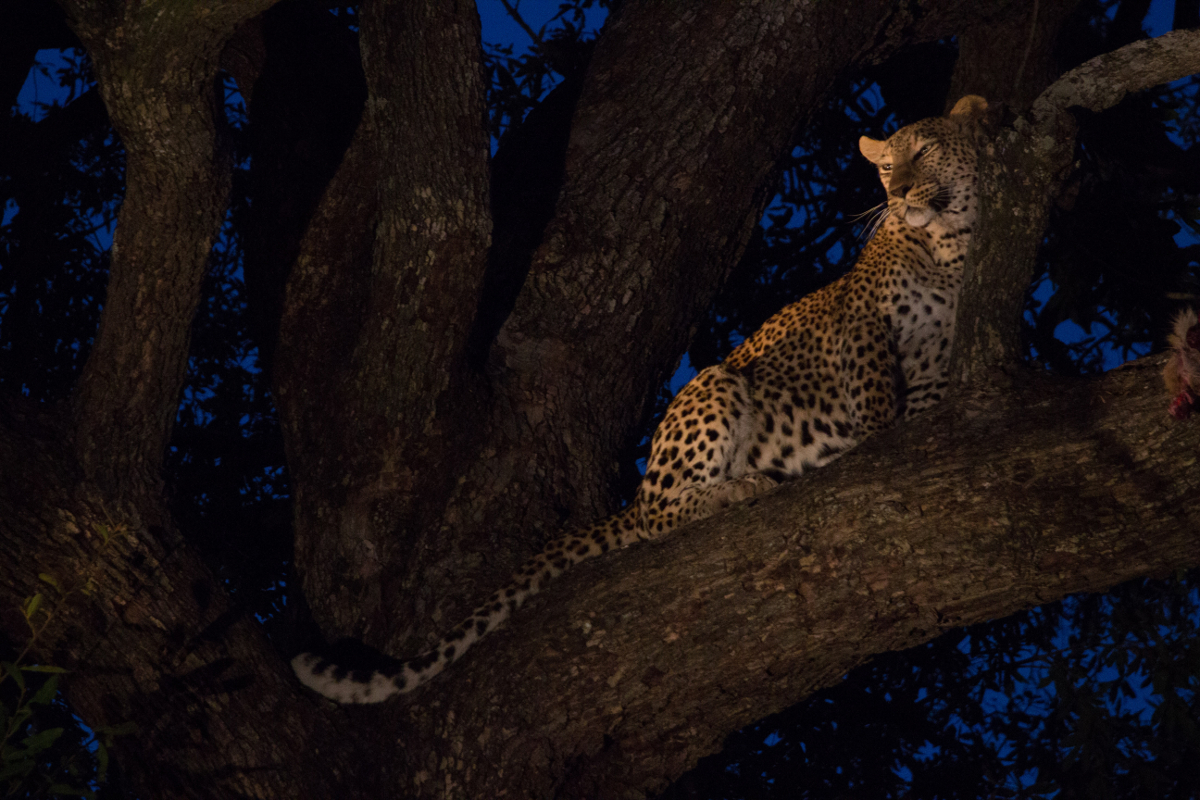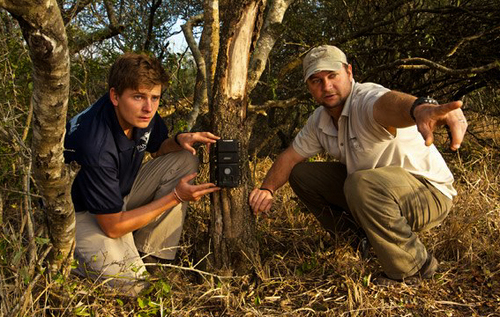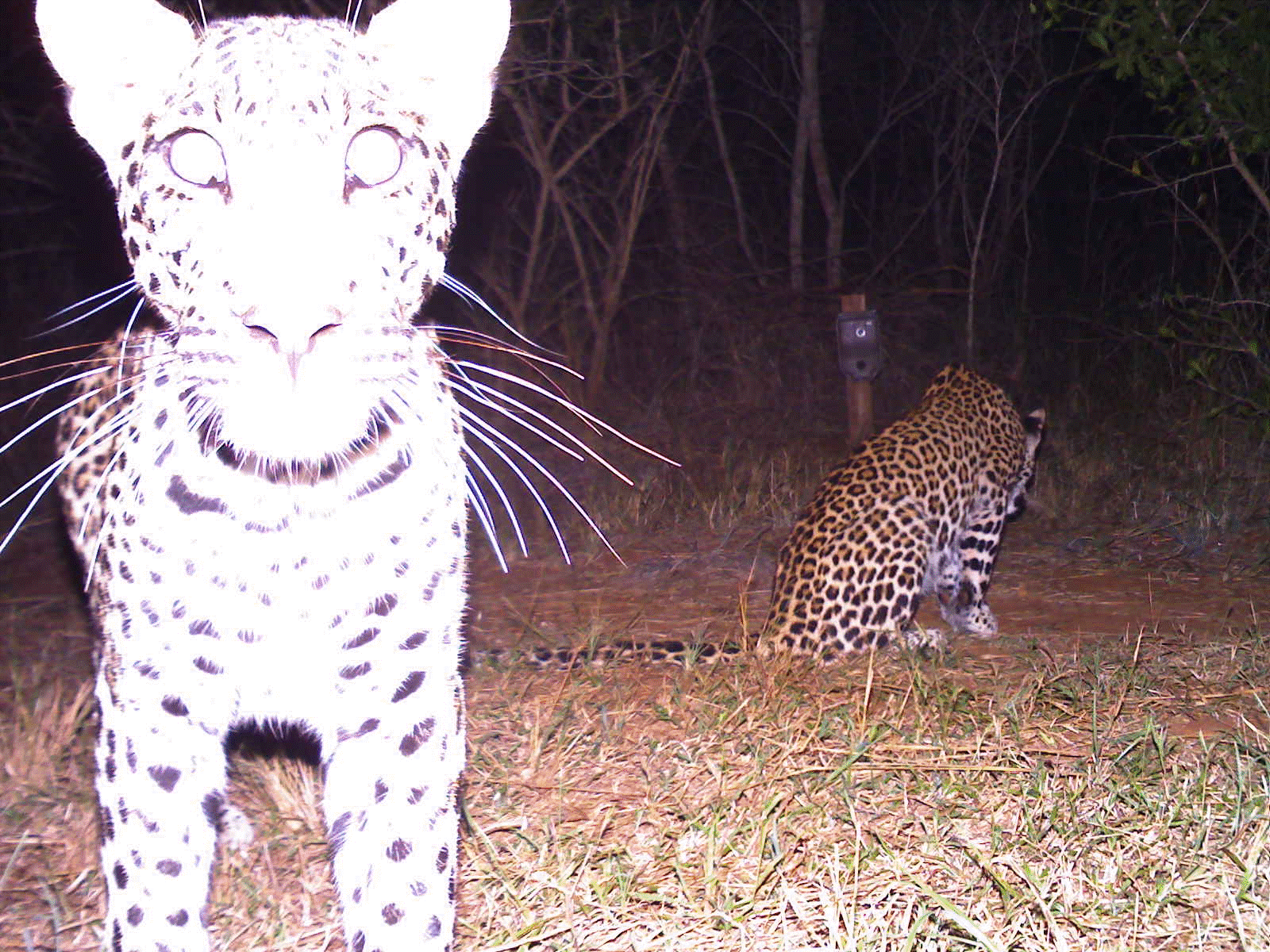News
David Macdonald explains the thinking behind a new WildCRU paper on camera-trapping
Camera-trapping is one of those things that sounds simple in principle, but turns out to be rather tricky in practice. The idea is straightforward: position an automated camera to record the comings and goings of your study animals, enabling your “electronic eyes” to stay in position, actually in many different positions (grids of up to 160 cameras), for months on end (sometimes periods of up to three or more months), night and day, come rain or shine, while you are cosily tucked up at home.

Photo by Alex Braczkowski: female leopard in the Sabi-Sands
The trickiness comes not only with the ever more sophisticated statistical intricacies of analysing the data, and of positioning the cameras, but also in terms of the basic practicality of persuading the subjects to present themselves in front of the camera. This latter problem has been the topic of two recent WildCRU studies of leopards – a couple of years ago WildCRU’s Byron du Preez, working in Zimbabwe, demonstrated clearly that it can sometimes to be useful to lure leopards to camera traps using food bait in the form of prey carcasses hung alluringly in front of the cameras. Now, in a new paper published this week, WildCRU’s Alex Braczkowski has led a team of our collaborators to test whether scent trails (laid by dragging the smelly entrails of prey towards the cameras) could be used for the same purpose – the ultimate goal of all these explorations is not only to increase the accuracy of the technique, but also to improve the quality and types of data collected.
Density estimates are only half the answer; understanding density in terms of the population dynamics, which are sensitive to both biological and anthropogenic influences, and which can drastically alter from one year to the next because of varying levels of such influences, is valuable information for both conservationists and policy makers alike. The core problem is that scientists need to balance survey duration and camera effort so as to not violate assumptions about population closure.
Alex (an alumnus, with Distinction, from WildCRU’s famous Diploma course led our exploration of whether we could increase the precision of camera trapping for leopards in Kwazulu-Natal, South Africa by laying scent trails in front of camera traps.

Photo by Steve Winter: Alex Braczkowski and co-author Tristan Dickerson setting up a camera-trap for leopards during the survey on Phinda, KZN, South Africa in 2012
We dragged the entrails in front of the cameras every 3 days. It didn’t work – that is, leopard detection rates did not improve when compared to a survey with no lures. Of course, we’ve puzzled over the difference between Byron’s positive result and Alex’s negative one. The habitats were somewhat different, but the main explanation is likely to be that in our Zimbabwean study the leopards, wary by nature, could smell, and achieve, the reward of an appetising carcass – it made a real incentive for them to visit the cameras, whereas in South Africa they may have judged it simply wasn’t worthwhile following a decaying scent trail; especially for the females, significantly smaller than the males, and therefore more at risk from encountering other predators with the same idea. Bit by bit, studies of this sort help us refine camera-trapping techniques, but each refinement has to be carefully integrated into the statistical assumptions underlying analysis of the resulting data.






